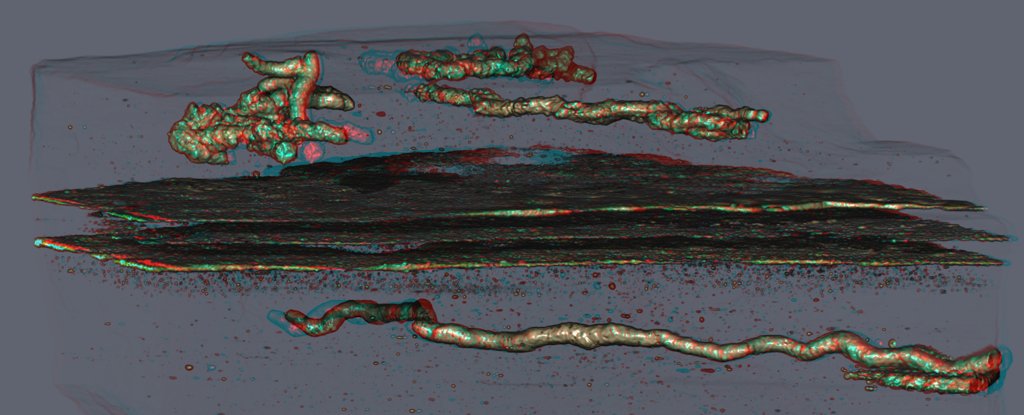
A. El Albani & A. Mazurier/IC2MP, CNRS/Université de Poitiers
Life forms back then were only supposed to be single-celled organisms that hardly moved. One suggestion is that the life forms may have been something like a slime mold. Amoebas get together in a slime when they are short of food and organize themselves as one single organism until conditions improve, after which they disperse. This they are indeed one-celled by preference but can be multi-celled organizations if they must.
“When you are trying to claim the oldest anything, the bar is very high,” says Williams College paleontologist Phoebe Cohen, who peer-reviewed the paper from El Albani and colleagues. She says the thoroughness of the team’s methods makes their results “compelling, even though I might not agree with their specific conclusions.” Perhaps the most ambitious of these was the assertion the fissures in ancient Gabonese rocks could have been made by an organism analogous to slime molds. These amoebozoans—a phylum of single-celled eukaryotes—spend most of their lives as individual organisms, but will gather into motile multicellular formations to search for food and reproduce. The study proposes the fissures could be the result of a similar organism moving through sediment and leaving behind mucus trails. “It’s not impossible,” she says. But molecular clocks—which infer the age of evolutionary lineages by estimating the accumulation of genetic mutations over time—place the last common ancestor of all eukaryotes at around 1.8 billion years ago, she notes. That’s about 300 million years after the putative slime molds would have made the channels.Jim Daley, “[article title]” at Scientific American
The behavior of the slime mold (if that’s what it is) sounds altogether too modern for Dr. Cohen’s liking. That’s understandable. See, for example, “Is an amoeba smarter than your computer? (yes, in certain respects, it is) The trouble is, many forms of behaviour, like nest-sharing and parental care, have been found earlier than expected. We shall see.
Here’s a vid showing the tracks.
See also: “Super-Ancient Mobile Organisms” Push Mobile Life Back To 2.1 Billion Years Ago
Follow UD News at Twitter!